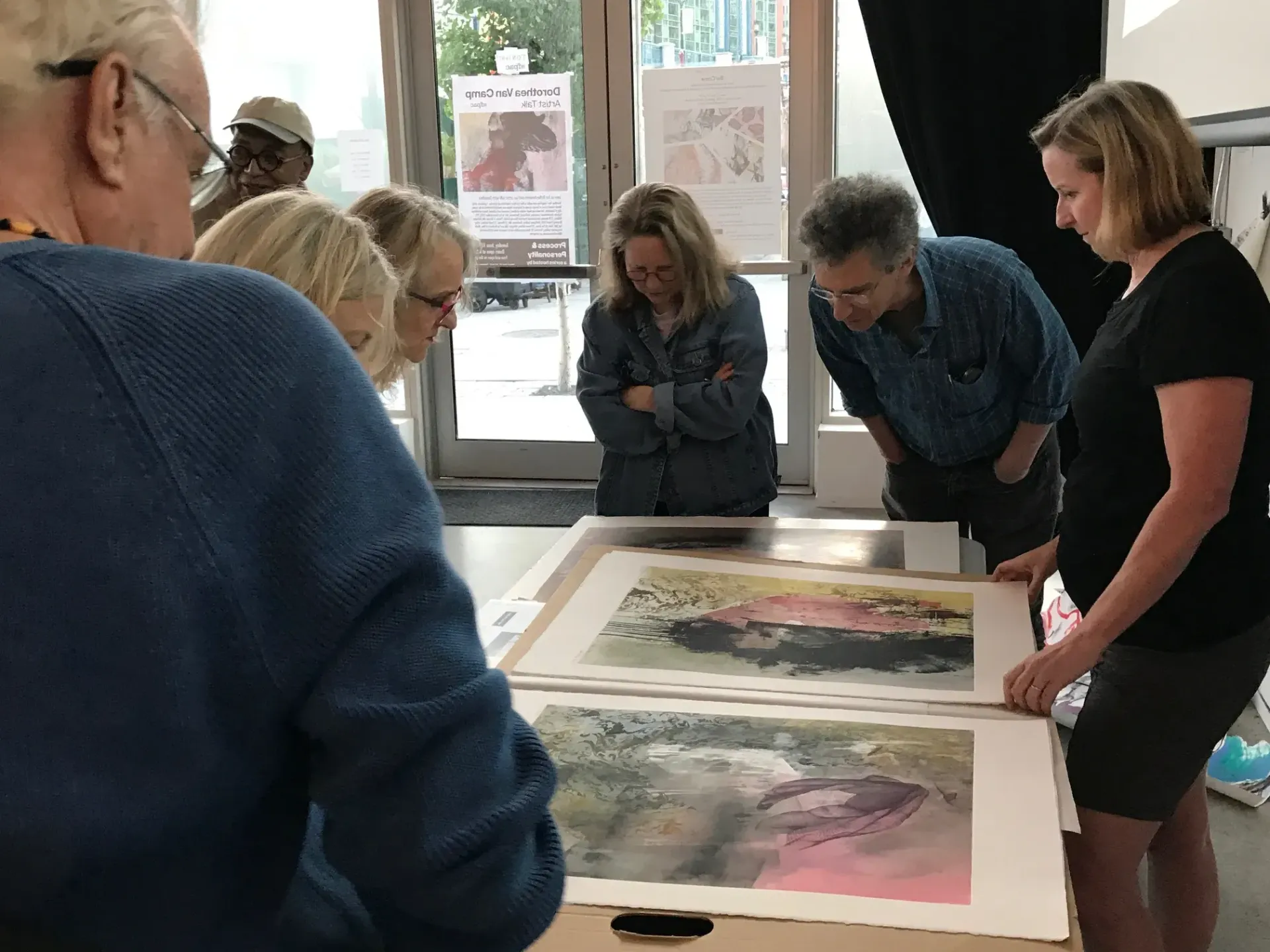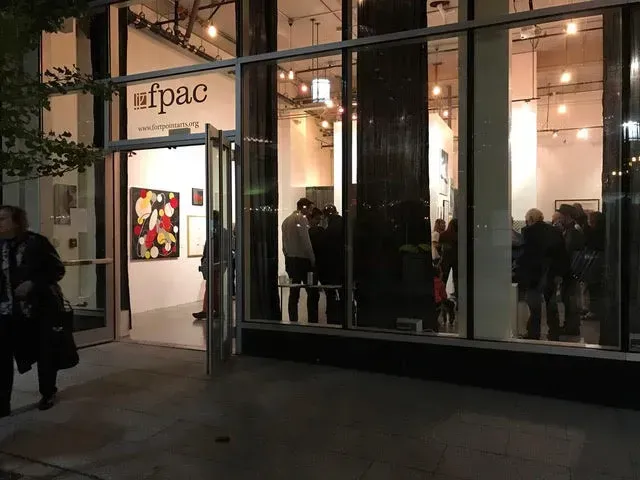ASSEMBLAGE ART SPACE
BOSTON, MA
WE-Making is a suite of resources that explores the relationship between place-based arts practices and social cohesion as a means to advance health equity and community wellbeing. This We-Making story is one example of how place-based arts and cultural strategies uniquely contributed to social cohesion and wellbeing in this community. Throughout this story you’ll see terms paired with actions in parentheses (e.g., social capital, collective action, place attachment, civic engagement, self-determination of shared values). This is to denote for the reader how the WE-Making framework was specifically incorporated. Explore the WE-Making framework and resources.
Image credit: Fort Point Arts Community
The Assemblage Art Space is a 1200 square foot gallery, performance, and collaboration space located in the Northwest corner of a boutique hotel on the South Boston Waterfront. It faces a windswept public plaza with floor-to-ceiling windows on two sides. The Assemblage is a Chapter 91 Facility of Public Accommodation, which means that it is dedicated to increasing the public's access to (and enjoyment of) the Boston Waterfront. In a normal year the Assemblage hosts six exhibitions, winter pop-up shops, theater, music, dance, and spoken word performances, public meetings, and arts events. The Assemblage is a collaborative workspace project created and managed by The Fort Point Arts Community (FPAC) and originally funded by MassDevelopment.
As an organization founded in 1980 by community activists, FPAC recognizes the important role the arts play in building a diverse, collaborative community. The organization serves a variety of constituencies including low-to-moderate-income arts and culture sector workers and their families; the artists, organizations, and creative entrepreneurs of the City of Boston and the Fort Point Arts Neighborhood; and visitors to the South Boston Waterfront including city residents, tourists, and workers.
FPAC partners with a variety of organizations to produce quality arts and culture programs aimed at public enjoyment of the neighborhood. through bringing fee-free performances to the public. Since 2020, FPAC also began providing collaborative workspaces free of charge to artists and organizations.
When the pandemic lockdowns began in March of 2020, it wiped out the exhibition schedule. Public events and programs were postponed and facility rentals were canceled. During the initial lockdown phase, workspaces for artists were largely closed in Boston and many artists were confined to small, shared work spaces within their homes.
Place-based arts and cultural strategies…
As part of FPAC’s mission to support artists, the organization offered the Assemblage Art Space free of charge to creatives who needed room for writing, artistic work, rehearsals, lessons, workshops, classes, and photoshoots (place attachment). The space was offered to any interested artist. Artists scheduled specific windows of work time within the space and adhered to strict covid guidelines while using it.


...amplify the drivers of social cohesion…
FPAC decided to offer the space for free after the board unanimously adopted the Statement on Cultural Diversity and Equity in July, 2020. The statement calls for equitable access to affordable workspace for artists and creatives. Opening the space to those who needed it in times of crisis was the most productive path to support the creative community with limited resources (civic engagement- lower bar to entry, encouraging participation of community members). Artists came to work in the space from communities across the state. With this widespread network of artists comes improved social cohesion, and a greater sense of community on a state level.
...to increase equitable community well-being.
From September 2020 to July 2021, The Fort Point Arts Community provided more than 3,000 hours of work time to artists from disciplines including African dance, ballroom dance, ceramics, design (general), fashion and fiber art, mixed media installation, modern dance, painting, photography, poetry, projection art, public art, sound art, and videography. Such diverse art forms created a far-reaching network of artists in the community. This represents a value to the arts community of more than $450,000 within that time frame.



